- Clone
- UC3-10A6 (See other available formats)
- Regulatory Status
- RUO
- Other Names
- Vγ2 T-cell receptor, T cell receptor gamma 2, TCR Vγ4 (Tonegawa nomenclature)
- Isotype
- Armenian Hamster IgG
- Ave. Rating
- Submit a Review
- Product Citations
- 9 publications
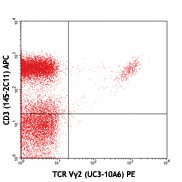
| Cat # | Size | Price | Quantity Check Availability | Save | ||
|---|---|---|---|---|---|---|
| 137705 | 50 µg | £100 | ||||
| 137706 | 200 µg | £230 | ||||
T cell receptor (TCR) Vγ2 bearing T lymphocytes make up a significant proportion of γδ TCR cells in late fetal and adult peripheral lymphoid tissues. TCR γδ T cells may play a role in immunological surveillance for stress-induced self-antigens. The frequency of Vγ2 expression in different strains varies from 12% to 54% in the TCR γδ repertoire. Variations in the levels of Vγ2+ cells are not associated with MHC haplotype.
Clone UC3-10A6 reacts with the Vγ2 segment as designated by the Garman nomenclature.1 Mouse TCR Vγ2 is also known as TCR Vγ4 under the Heilig & Tonegawa nomenclature system.
Several TCR γ and δ chain nomenclature systems exist. In order to consolidate the various nomenclature systems, we have created charts for corresponding names across some of the most popular naming methods. Click here to see charts.
Product Details
- Verified Reactivity
- Mouse
- Antibody Type
- Monoclonal
- Host Species
- Armenian Hamster
- Immunogen
- G8 mouse T cells
- Formulation
- Phosphate-buffered solution, pH 7.2, containing 0.09% sodium azide.
- Preparation
- The antibody was purified by affinity chromatography and conjugated with PE under optimal conditions.
- Concentration
- 0.2 mg/ml
- Storage & Handling
- The antibody solution should be stored undiluted between 2°C and 8°C, and protected from prolonged exposure to light. Do not freeze.
- Application
-
FC - Quality tested
- Recommended Usage
-
Each lot of this antibody is quality control tested by immunofluorescent staining with flow cytometric analysis. For flow cytometric staining, the suggested use of this reagent is ≤0.125 µg per million cells in 100 µl volume. It is recommended that the reagent be titrated for optimal performance for each application.
- Excitation Laser
-
Blue Laser (488 nm)
Green Laser (532 nm)/Yellow-Green Laser (561 nm)
-
Application References
(PubMed link indicates BioLegend citation) -
- Dent AL, et al. 1990. Nature 343:714.
- Kelly KA, et al. 1993. Int. Immunol. 5:331.
- Sperling AI, et al. 1992. J. Immunol. 149:3200.
- Sperling AI, et al. 1997. J. Immunol. 159:86.
- Product Citations
-
- RRID
-
AB_10643997 (BioLegend Cat. No. 137705)
AB_10643577 (BioLegend Cat. No. 137706)
Antigen Details
- Structure
- A member of Ig superfamily, associated with TCR δ chain and CD3 complex.
- Distribution
-
T cell subset in fetal and adult peripheral lymphoid tissues and thymus.
- Function
- Might play a role in a previously unrecognized form of immunological surveillance for stress-induced self-antigens.
- Ligand/Receptor
- Antigens
- Cell Type
- T cells
- Biology Area
- Adaptive Immunity, Immunology
- Molecular Family
- TCRs
- Antigen References
-
1. Allison JP, et al. 1991. Annu. Rev. Immunol. 9:679.
2. O’Brien RL, et al. 2000. J. Immunol. 165:6472. - Gene ID
- 110067 View all products for this Gene ID
- UniProt
- View information about TCR Vgamma2 on UniProt.org
Related Pages & Pathways
Pages
Related FAQs
- What type of PE do you use in your conjugates?
- We use R-PE in our conjugates.
Other Formats
View All TCR Vγ2 Reagents Request Custom Conjugation| Description | Clone | Applications |
|---|---|---|
| FITC anti-mouse TCR Vγ2 | UC3-10A6 | FC |
| PE anti-mouse TCR Vγ2 | UC3-10A6 | FC |
| APC anti-mouse TCR Vγ2 | UC3-10A6 | FC |
| PerCP/Cyanine5.5 anti-mouse TCR Vγ2 | UC3-10A6 | FC |
| TotalSeq™-C0211 anti-mouse TCR Vγ2 | UC3-10A6 | PG |
| TotalSeq™-B0211 anti-mouse TCR Vγ2 | UC3-10A6 | PG |
| Spark Blue™ 550 anti-mouse TCR Vγ2 (Flexi-Fluor™) | UC3-10A6 | FC |
| Spark Blue™ 574 anti-mouse TCR Vγ2 (Flexi-Fluor™) Antibody | UC3-10A6 | FC |
| Spark Red™ 718 anti-mouse TCR Vγ2 (Flexi-Fluor™) | UC3-10A6 | FC |
Customers Also Purchased
Compare Data Across All Formats
This data display is provided for general comparisons between formats.
Your actual data may vary due to variations in samples, target cells, instruments and their settings, staining conditions, and other factors.
If you need assistance with selecting the best format contact our expert technical support team.
-
FITC anti-mouse TCR Vγ2

C57BL/6 splenocytes stained with UC3-10A6 FITC and CD3 APC -
PE anti-mouse TCR Vγ2

C57BL/6 mouse lymphocytes stained with TCR Vγ2 (UC3-10A6) P... -
APC anti-mouse TCR Vγ2
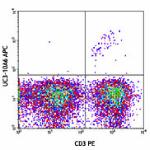
C57BL/6 mouse splenocytes were stained with CD3 PE and TCR V... 
-
PerCP/Cyanine5.5 anti-mouse TCR Vγ2

C57BL/6 splenocytes were stained with CD3 FITC and TCR V&gam... -
TotalSeq™-C0211 anti-mouse TCR Vγ2
-
TotalSeq™-B0211 anti-mouse TCR Vγ2
-
Spark Blue™ 550 anti-mouse TCR Vγ2 (Flexi-Fluor™)
-
Spark Blue™ 574 anti-mouse TCR Vγ2 (Flexi-Fluor™) Antibody
-
Spark Red™ 718 anti-mouse TCR Vγ2 (Flexi-Fluor™)

 Login / Register
Login / Register 










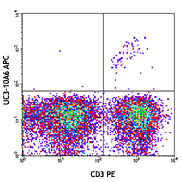
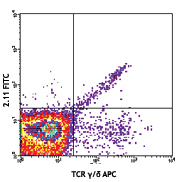
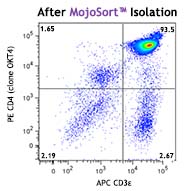
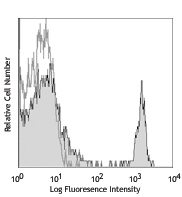







Follow Us